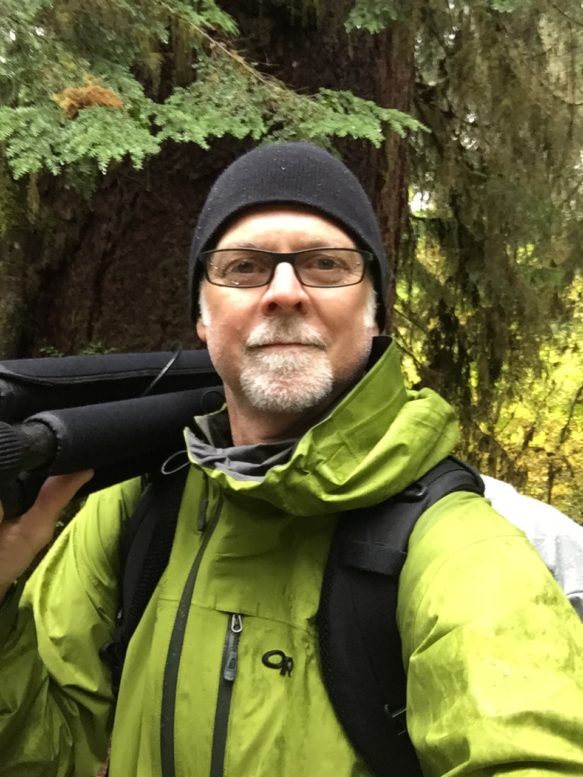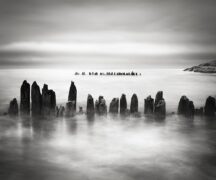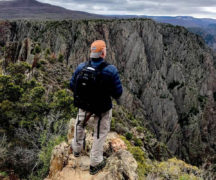By DAVID DUPONT
BG Independent News
The Black Swamp Arts Festival played a pivotal role in launching Jan Bell’s photographic career.
In 2003, the long-time graphic designer for WBGU-TV had returned to photography. He had accumulated enough work that he decided to apply to enter the juried show.
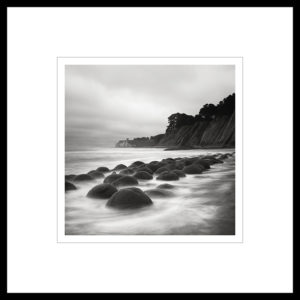
“Round Rocks at Low Tide”
(Photo by Jan Bell)
Bell was accepted, and then on the festival weekend, the judges returned and awarded him best of show honors.
It was his first art fair.
Since then he’s put up his tent, assembled his street gallery, greeted customers, taken it all down and moved on, on dozens of times.
More importantly, he’s traveled thousands of miles on photographic adventures to national and provincial parks here and in Canada living in a camper, hiking with 40 pounds of equipment, and waiting for days for the right light on the right subject.
When he won the top award so early in his career, one woman warned him about the dangers of such early success. Bell has not rested on his laurels. His work has been accepted in many shows and received numerous honors, and has continued to evolve.
These past 12 months have been especially notable.
One photograph, “Distant Island,” an image from Lake Superior was juried into nine exhibitions. “That’s crazy wild,” he said.
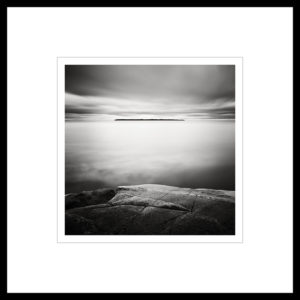
“Distant Island” (Photo by Jan Bell)
Then it won first place in one of those shows the Allegany National Photography Exhibition in Cumberland, Maryland, as well as an honorable mention at the Crooked Tree Arts Center in Petoskey, Michigan in April. Then three works were included in a photo exhibit highlighting images of National Parks at the same gallery. The exhibit was being held in conjunction with a show of photographs by Ansel Adams, Bell’s idol. “Three Sea Stacks” won best of show and “Agave” won an honorable mention.
Bell also got to work with Alan Ross, the only person with permission to print from a select set of Adams’ negatives.
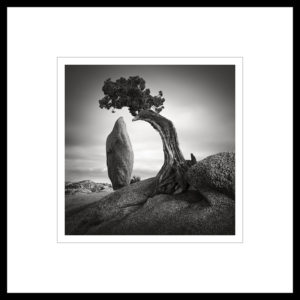
“Balance Rock” (Photo by Jan Bell)
“Three Sea Stacks” came from what turned out to be a three-month residency at Olympic National Park in Washington. He ended up waiting out a spell of historically bad weather that closed the park for four days.
For four days he waited out the storm in a recreational vehicle storage unit. Those four days were the worst, but the weather was consistently bad. “I was in rain all day long.” Still he worked. He trekked along the Pacific Coast in search of images that he could turn into striking art with a depth of emotion.
His stay was funded by a M. Reichmann Luminous Landscape grant. Bell learned right before he left that Michael Reichmann had died of cancer. “I felt I had to work especially hard.”
That meant staying on well into December to complete what he wanted to do. “I need to live in a location to understand it.”
That and other commitments have kept him from participating in the Black Swamp show since 2014, and that was after a five-year absence. On the advice of his wife, Carol, he’d decided to return for the festival’s 25th year.
Before then he and Carol decided they’d go on vacation. That included traveling up to Petoskey so she could see the exhibits at the Crooked Tree Center.
As Bell was getting his trailer ready to go, he tweaked his back. Nothing to stop an intrepid traveler. Then during a stop, he fell twice, and then later in the day he fell in a toppled over in a rest room. Something was seriously wrong. They headed back to Bowling Green and what has been rounds of visits to various medical specialists to determine what is wrong and how to treat it.
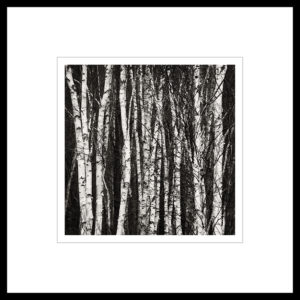
“Hide and Seek” (Photo by Jan Bell)
In the meantime, Bell is confined to home. He can do limited work in his studio as the pain and weakness allows.
He ended up being a last minute scratch from the festival. Those interested in checking out his work can go to his web site www.bellimages.com.
Bell is hoping to have his medical issues resolved so he can teach a course next fall at Lake Superior Provincial Park and Pukaskwa National Park in Canada next fall.
Teaching a course is one of the items on his life list. The syllabus is already written, he said. The emphasis will be on composition and “making an expressive print.”
Bell will focus on how he treats the original image in Photoshop “adding the mood to the photo with light and shadow.” This brings out the emotional content that’s missing from the raw image. It reflects the impact that nature has on Bell.
His work is strikingly different than what he showed in 2003. Then the prints were smaller, and he used color more. He mixed in tightly cropped images of architecture, as well as shots of nature.
“I see a little differently than I did,” Bell said. “I’m opening up a little more to the landscape…. I still only give people a portion of what I want them to see.”
The rest, Bell said, he leaves to their imaginations.

